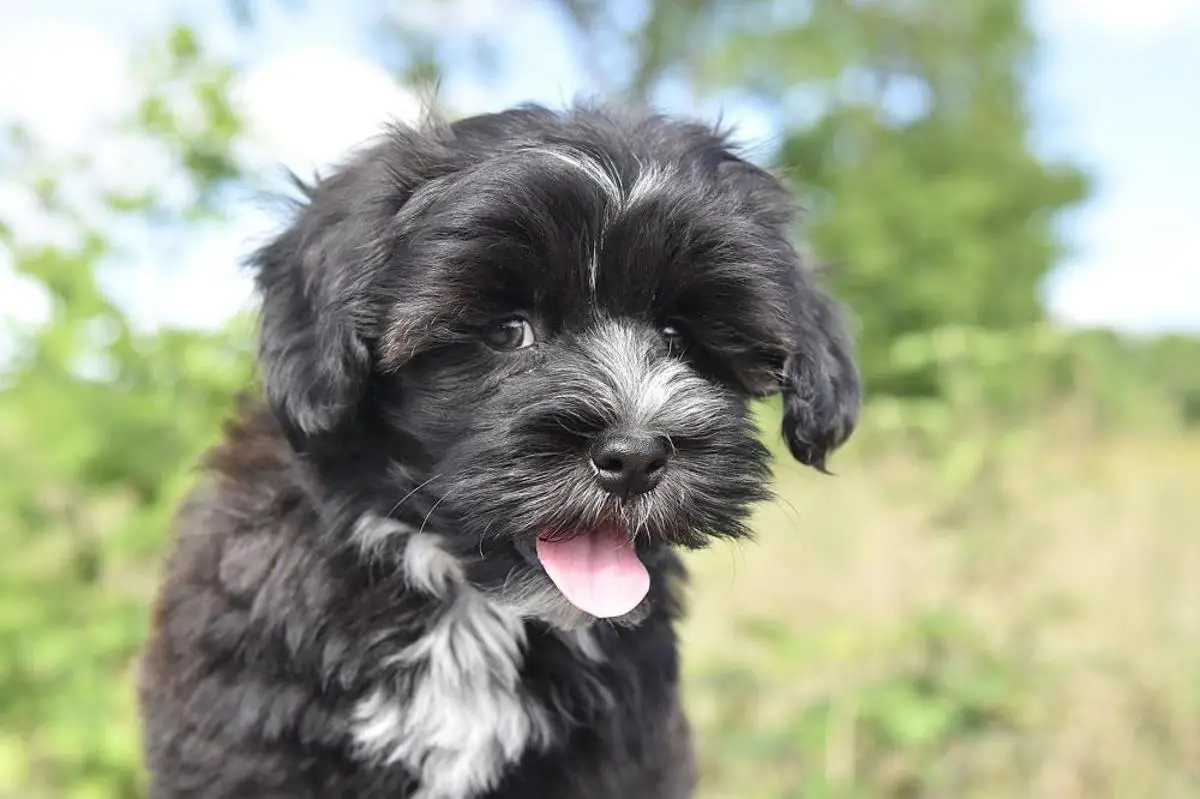Quick Links: Table of Contents
- Havanese Breed Overview
- History of the Havanese Breed. Where Havaneses came from
- What the Havanese Looks Like
- How Much is the Havanese Puppy?
- Best Havanese Breeders
- Adopting or Rescuing the Havanese
- What Colors do Havaneses Have?
- The Temperament of the Havanese
- Havanese Litter Size
- How Fast Havaneses Can Run
- Good Names for Havaneses
- How Popular are Havaneses with New Dog Owners?
- Health Problems in Havaneses and How to Prevent Them
- Dog Breeds That Are Similar to Havaneses
- Other Things to Know About Havaneses
Havanese Breed Overview
The Havanese is a small-sized dog.
The adult Havanese stands 8 to 11 inches tall at the shoulder.
The Havanese belongs to the Companion Dogs group.
Dogs in the Companion Dogs group, like the Havanese, were bred to be companions for humans. Their main goal in life is to be with people, and they will be very sad if left to themselves for long hours day after day.
The fact that the Havanese belongs to the Companion Dogs group is one of the reasons why Havaneses have the personality and temperament that they have.
The temperament of the Havanese is generally described as:
- Affectionate
- Companionable
- Gentle
- Intelligent
- Playful
- Responsive
History of the Havanese Breed. Where Havaneses came from
The Havanese is a small toy breed from somewhere in the 1500s.
This breed was bred to be companion animals to those in higher lifestyle brackets, such as the rich or Royalty.
The Havanese came from Blanquito de la Habana, a now extinct ancestor.
Havanese dogs are fluffy and can come in a variety of colors.
Coats of the Havanese are usually long and smooth and are a recognizable characteristic of the breed.
Havanese dogs are an intelligent and energetic breed that makes great companions.
They are eager to please and stick close to their owners and are credited for being great at accepting change in their environments.
Havanese are outgoing and friendly dogs and take kindly to anyone their owner likes.
This breed is sensitive and incredibly dependent socially and should not be isolated for long periods to avoid unwanted behaviors.
.
What the Havanese Looks Like
The Havanese is a smaller toy breed with a long, flowing double coat.
A Havanese dog`s coat is meant to excel in the show setting.
This breed is primarily fluffy and needs a solid brushing daily to avoid mats or tangles.
The colors of a Havanese coat can vary and is mostly reliable.
They have been known to be black, white, Havana brown, tobacco, fawn, and mahogany The Havanese is built for being a lap dog and needs attentive owners so as not to feel alone.
Many Havanese have enjoyed living literally in the laps of luxury as Royals and other people of high status enjoyed keeping this breed.
A Havanese is relatively easy to maintain and only needs simple training and exercise daily to stay well-rounded and able to adjust to things happening in their environments.
.
How Much is the Havanese Puppy?

The average price of a Havanese puppy is $2180. The price of a Havanese puppy ranges from $1700 to $2750.
A lot of factors determine the price of the Havanese. These factors include what health records the Havanese puppy has, the lineage of the Havanese puppy, the US state the breeder is located in, etc.
To estimate how much you can expect to pay for a puppy Havanese based on the many factors that determine the price of the Havanese puppy, check out our calculator that lets you estimate how much you should expect to pay for the Havanese puppy based on what you want in the puppy.
When looking to buy a puppy, look at buying a puppy only from well-established breeders that breed puppies primarily for the love of the Havanese breed, and secondarily for profit. Do not buy a puppy from a puppy mill. Puppy mills mass-produce puppies in bad living conditions for maximum profit.
You may also consider adopting instead of buying a puppy. Adoption costs are very low compared to the price of a puppy.
Best Havanese Breeders
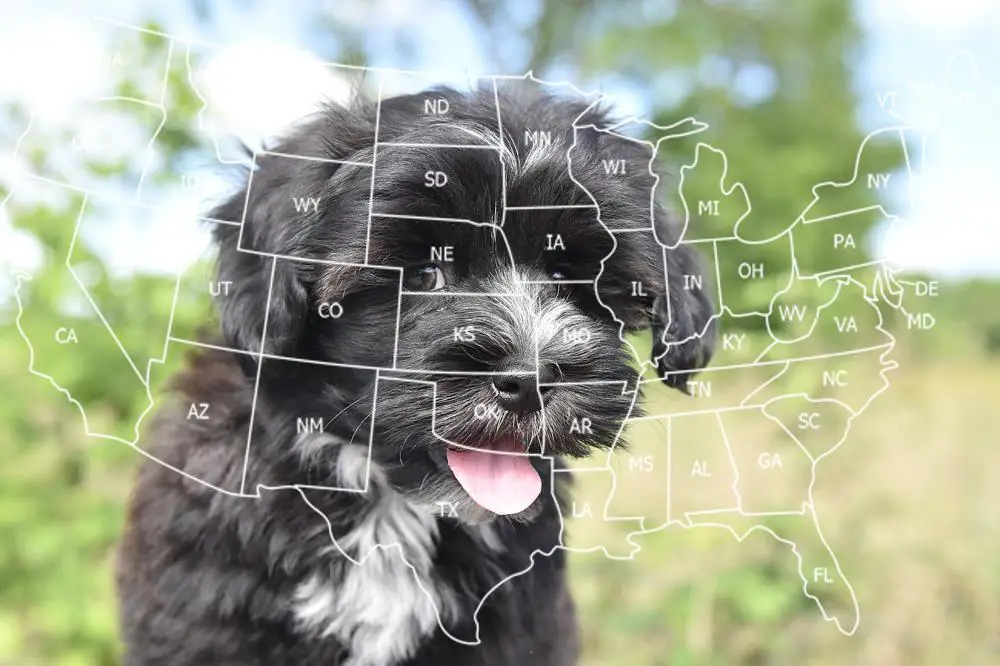
We have researched reputable Havanese breeders that you can buy a puppy.
Go to this page for our complete list of reputable Havanese breeders in various states in the United States.
On this page, you will see how much these breeders sell their puppies for, and how many puppies they have available.
A few of these breeders are listed below.
Judith Zember
Puppy Price: Check with breeder
Tina Snyder
Puppy Price: Check with breeder
OzarkSun.com
Puppy Price: Check with breeder
Madison Park Havanese
Puppy Price: Check with breeder
Highborn Havanese
Puppy Price: Check with breeder
Adopting or Rescuing the Havanese
You may consider adopting a dog instead of buying a puppy. Many dogs, Havaneses included, are currently available for adoption in your local dog shelters.
These helpless but adorable dogs are waiting in dog shelters hoping that someday someone will rescue them. Dog adoption costs are lesser than the cost of a new puppy. Dog adoption costs are usually around $300 or even less.
In addition to your local dog shelter, another good place to find dogs that are available for adoption is petfinder.com.
Below is an adorable Male Havanese named Oliver that is currently available for adoption on Petfinder.com. You can find other lovely Havaneses like Oliver on pefinder.com.

Naverick is the name of another Havanese (Male) on petfinder.com that is looking for a new forever home.
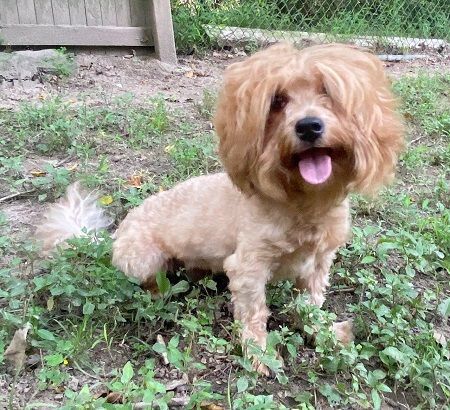
You can find more Havaneses that are available for adoption on petfinder.

What Colors do Havaneses Have?
Havaneses come in the following beautiful primary colors:
- Apricot / Beige
- Tricolor (Brown, Black, & White)
- Black
- White / Cream
- Yellow / Tan / Blond / Fawn
- Gray / Blue / Silver
- Brown / Chocolate
- Bicolor
- Red / Chestnut / Orange
Havaneses come in the following lovely secondary colors in addition to their primary colors:
- White / Cream
- Gray / Blue / Silver
- Bicolor
- Black
- Brown / Chocolate
- Yellow / Tan / Blond / Fawn

The Temperament of the Havanese
The temperament of the Havanese based can be summarized as in the table below.
The table shows the scores of the Havanese for 13 important dog behavioral factors.
We obtained these scores by analyzing raw data from the C-BARQ dog personality survey tool. The higher the score of a dog for a factor, the worse the temperament of the dog regarding that factor.
The C-BARQ tool was developed by researchers from the University of Pennsylvania, and it is a scientific tool that is used worldwide for reliably measuring the temperament of dog breeds.
See our complete analysis of the temperament of the Havanese here.
| Factor | Score |
|---|---|
| Energy Level | 62.0 percent |
| Attachment Attention Seeking | 61.6 percent |
| Excitability | 45.2 percent |
| Dog Directed Fear | 42.5 percent |
| Prey Drive | 38.9 percent |
| Stranger Directed Fear | 33.7 percent |
| Separation Related Behavior | 32.5 percent |
| Stranger Directed Aggression | 31.5 percent |
| Dog Directed Aggression | 28.5 percent |
| Stubbornness | 25.3 percent |
| Touch Sensitivity | 22.3 percent |
| Dog Rivalry | 22.1 percent |
| Nonsocial Fear | 20.7 percent |
| Owner Directed Aggression | 11.4 percent |
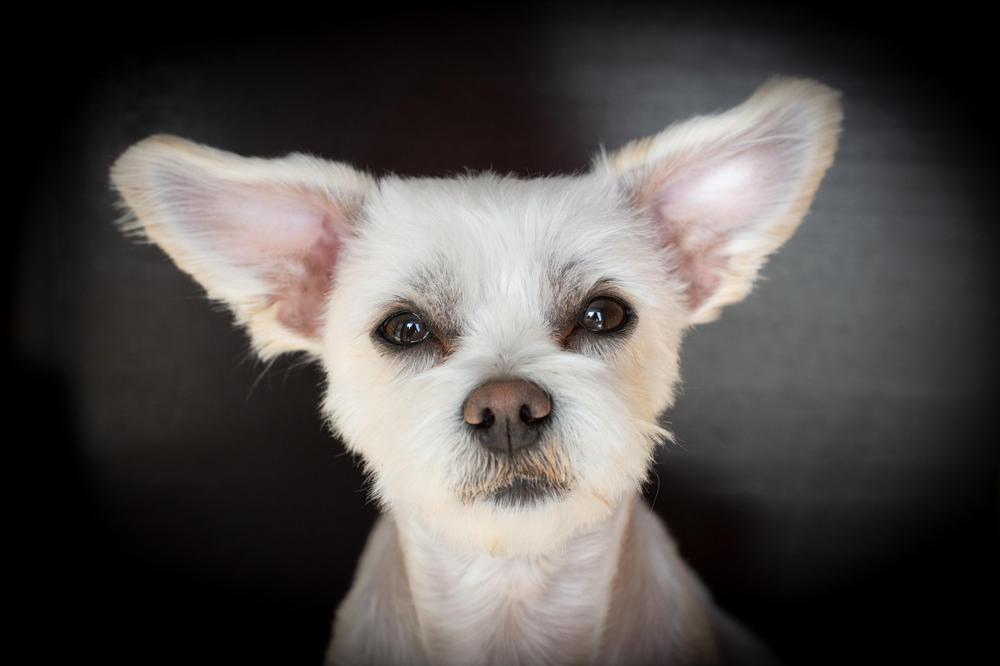

Havanese Litter Size
Researchers from the Norwegian School of Veterinary Science did a study where they counted the numbers of puppies in 73 different Havanese birth litters.
From this study, the researchers found that the average number of puppies that Havaneses can have is 4 puppies. Also, the Havanese can have as few as 1 puppies per litter and as many as 9 puppies per litter.
The number of puppies that the Havanese will have depends on factors such as the age of the Havanese, the method of pregnancy, etc.
Click here to see our calculator for predicting how many puppies your Havanese will have and how the litter size of the Havanese compares to the litter size of other dog breeds.
How Fast Havaneses Can Run
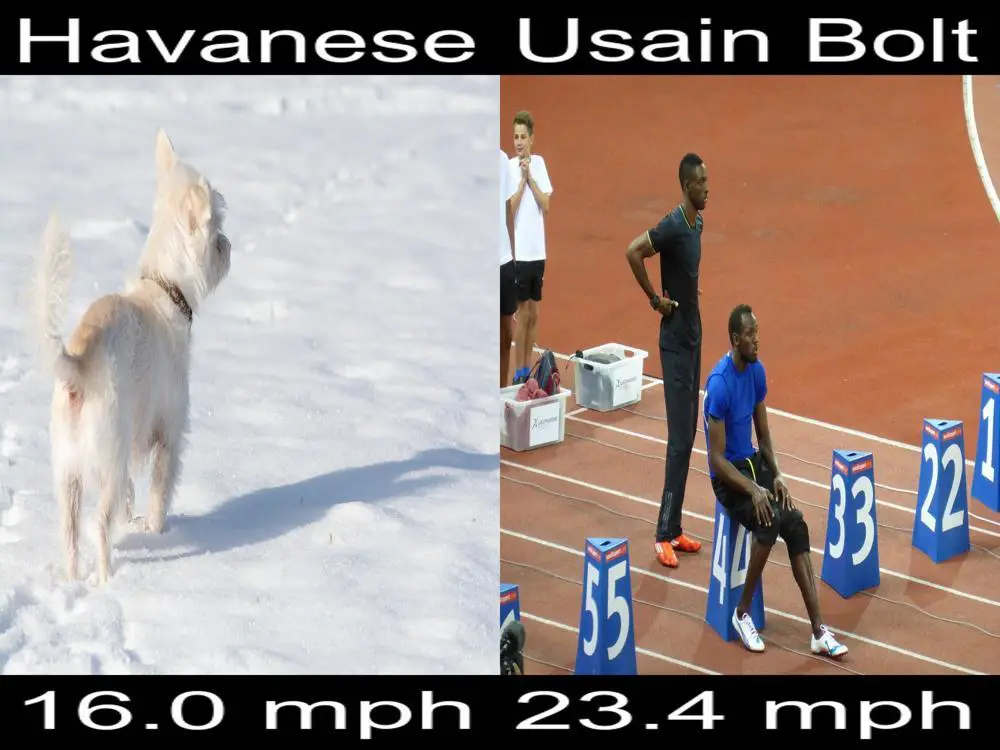
How fast a dog breed can run is a good measure of how athletic the dog breed is.
The American Kennel Club (AKC) regularly conducts dog running competitions. The AKC records the running speed of competing dogs in these competitions. These competitions are open to all dog breeds.
Based on our analysis of the speeds of 54 different Havaneses, the average speed of the Havanese is 16.0 mph (25.8 kmph).
The fastest speed on AKC record that the Havanese ran in a race is 24.1 mph (38.8 kmph) and the minimum speed on record in a race for a Havanese is 5.54 mph (8.9 kmph).
Click here to see how the speed of the Havanese compares to the speed of other dogs and other mammals such as cats, horses, humans, etc.
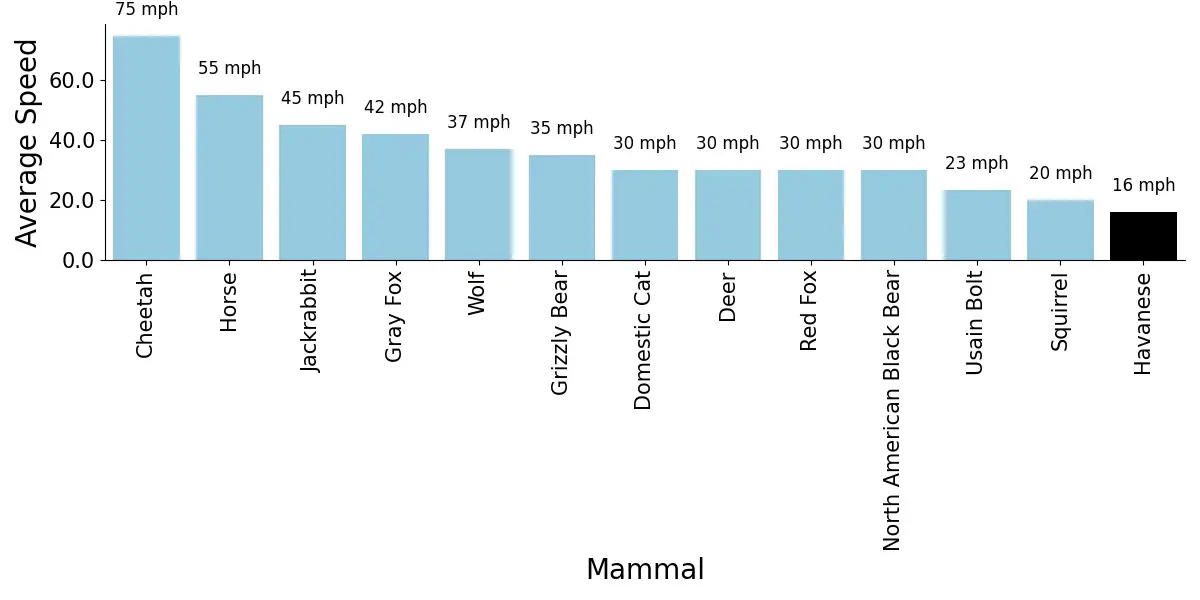
Good Names for Havaneses
Here are some really good names that are typical for the Havanese ranked by popularity:
- Ollie
- Dexter
- Charlie
- Zaki
- Oscar
- Tank
- Corby
- Hope
- Beau
- Davie

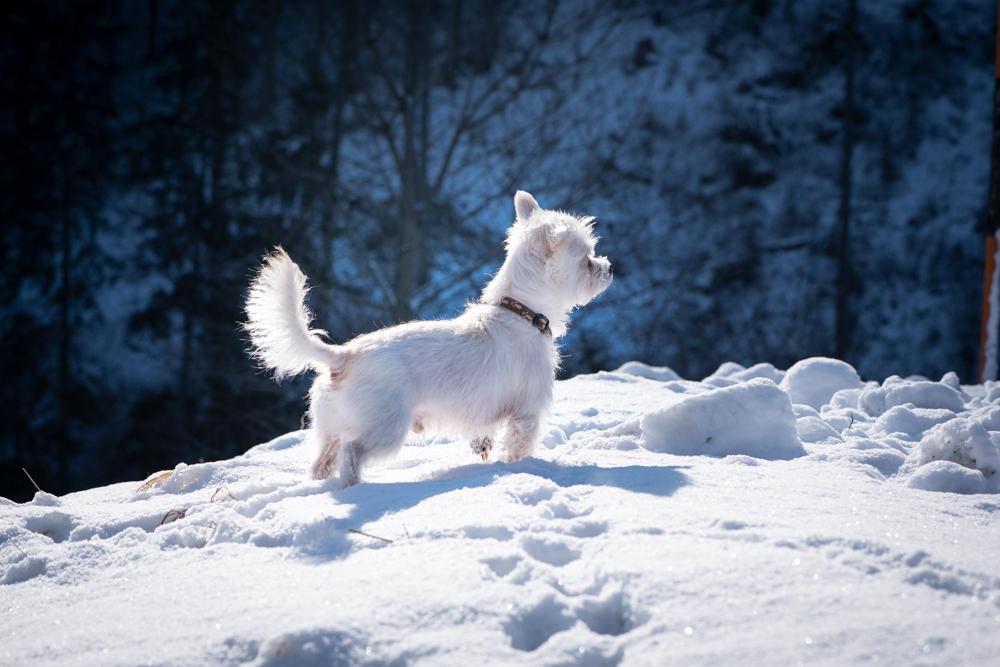
How Popular are Havaneses with New Dog Owners?
Every year, the American Kennel Club (AKC) publishes information on how popular a dog breed is in that particular year. The AKC gets the popularity information of a breed from how many dogs of that breed the owners register with the AKC every year. The AKC collects this data for about 200 dog breeds.
The graph below shows the popularity trend of the Havanese.
The popularity of the Havanese averaged over the years is Number 23 out of about 200 dog breeds.
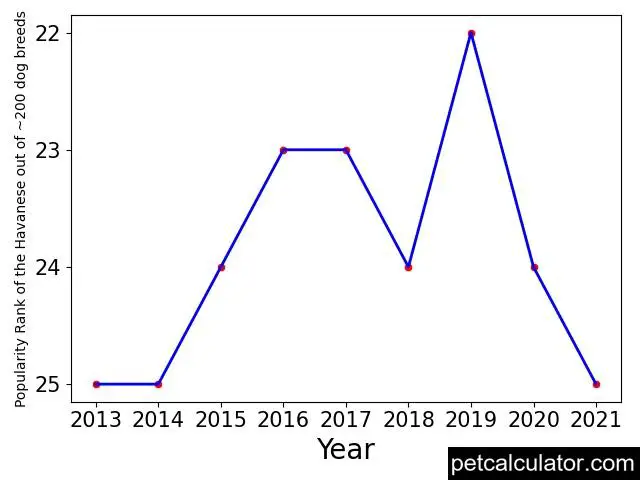
Do not get a dog breed just because it is a popular dog breed. And do not reject a dog breed just because it is an unpopular breed.
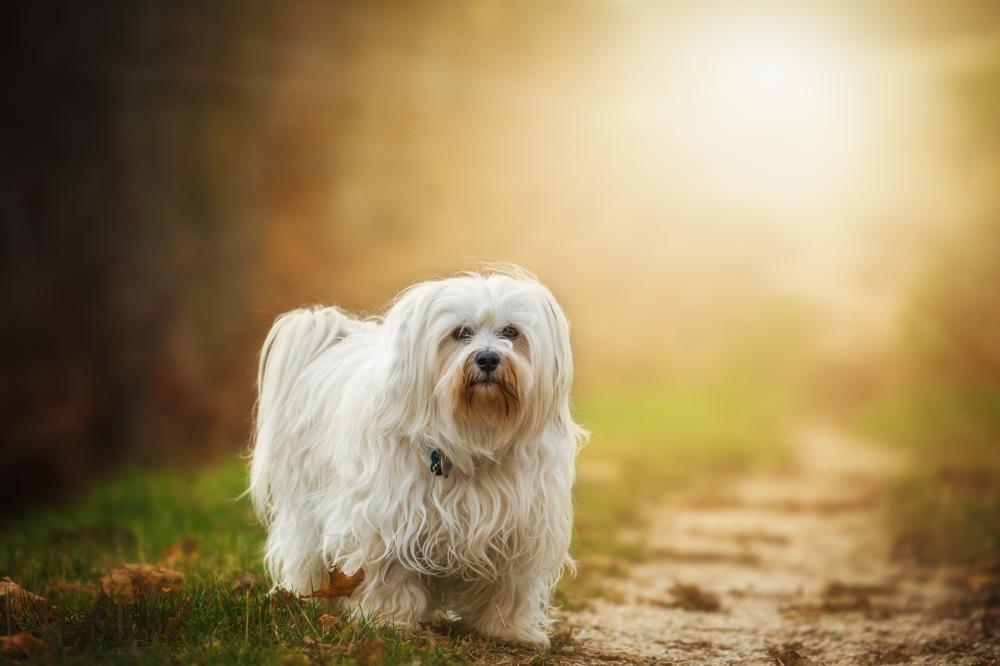
Health Problems in Havaneses and How to Prevent Them
Every dog breed has its own set of health problems that it tends to develop. There is nothing like a perfect dog breed.
The Havanese is prone to certain genetic health conditions. The Orthopedic Foundation for Animals (OFA) is an organization that keeps track of genetic health problems in dog breeds.
From the extensive records that the OFA keeps, the OFA knows what health problems each dog breed is naturally prone to develop.
Hence, the OFA recommends which health screening breeders should perform on a dog breed to make sure that the breeders won`t breed `defective` dog parents that can pass down defective genes to their puppy offspring.
If you want a Havanese puppy that will grow up to be healthy, make sure that your Havanese breeder screens your puppy or your puppy`s parents for the health problems that the OFA recommends for your puppy`s breed. This will increase the chances that your puppy is free from genetic defects.
The following are the health tests that Orthopedic Foundation for Animals (OFA) recommends that breeders should screen Havaneses for:
You can find out more about OFA`s recommended tests for Havaneses here.
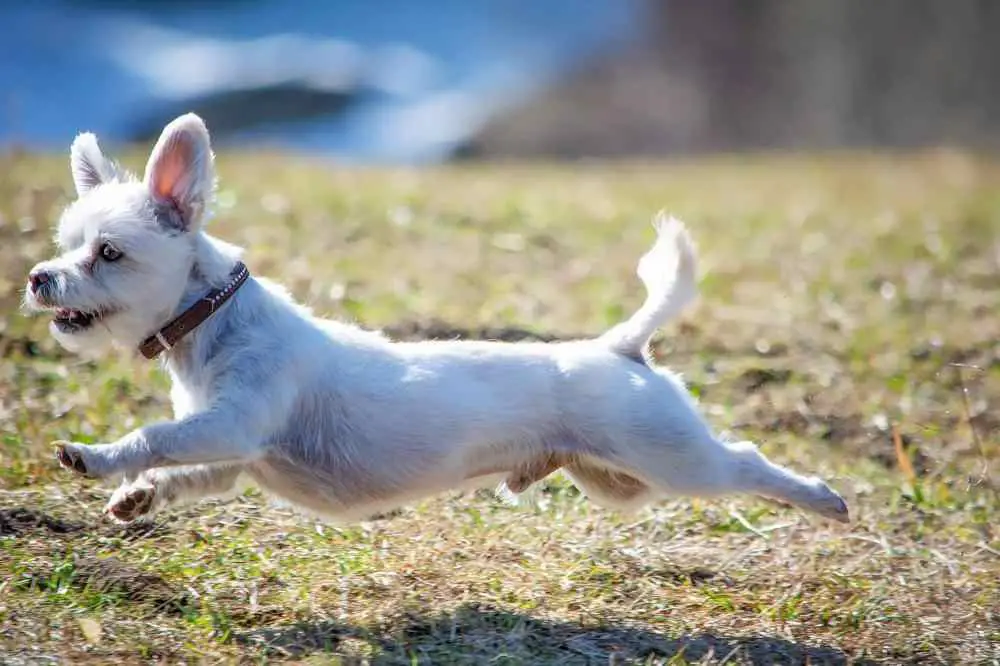
Dog Breeds That Are Similar to Havaneses
If you have not made up your mind on which dog breed to get, you may also want to consider some other dogs similar to the Havanese.
We crunched the numbers and found that the following dog breeds that have similar behavior and temperament as the Havanese:
- Bichon Frise (86 percent match with Havanese). Learn more about the Bichon Frise here.
- Cavachon (84 percent match with Havanese). Learn more about the Cavachon here.
- Bich Poo (85 percent match with Havanese). Learn more about the Bich Poo here.
- Toy Poodle (81 percent match with Havanese). Learn more about the Toy Poodle here.

Other Things to Know About Havaneses
Here are some of the very important characteristics of the Havanese that you need to know about the Havanese breed:
